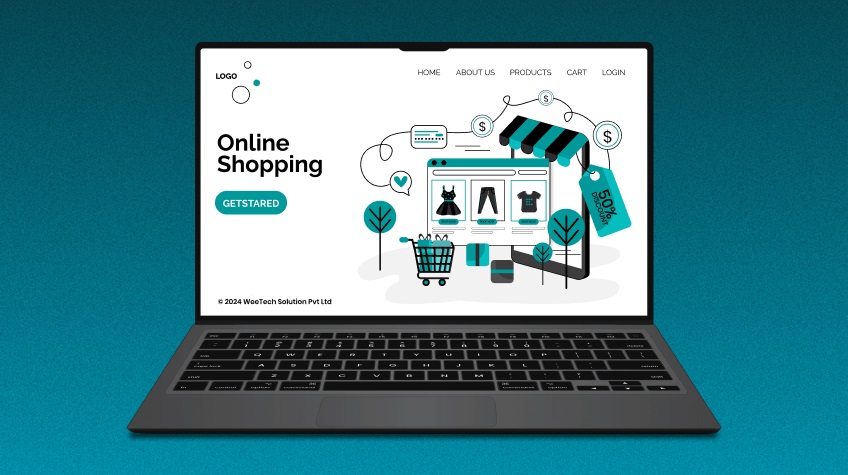
Any business needs an orderly e-commerce website in the digital arena. These orders in turn will offer a virtual storefront where the sale of products and services can be done to clients from all over the world. It can ensure a great shopping experience that attracts customers, inspires conversion and develops a sense of loyalty if the process is seamless and engaging.
And here is where professional eCommerce web development company comes into the picture. These include a host of most important features that enhance an e-commerce site’s functionality, thus improving the experience for users and ensuring that the visitor can find what he is looking for and buy it easily.
From effective intuitive product pages and some critical robust security measures, the feature of ecommerce web development services is created based on operational needs for business and the expectations of customers.
Let’s take a look at the in-depth feature analysis with common features, important features and add-ons features
Common Features of Web Development Services in e-Commerce
1. Product Page
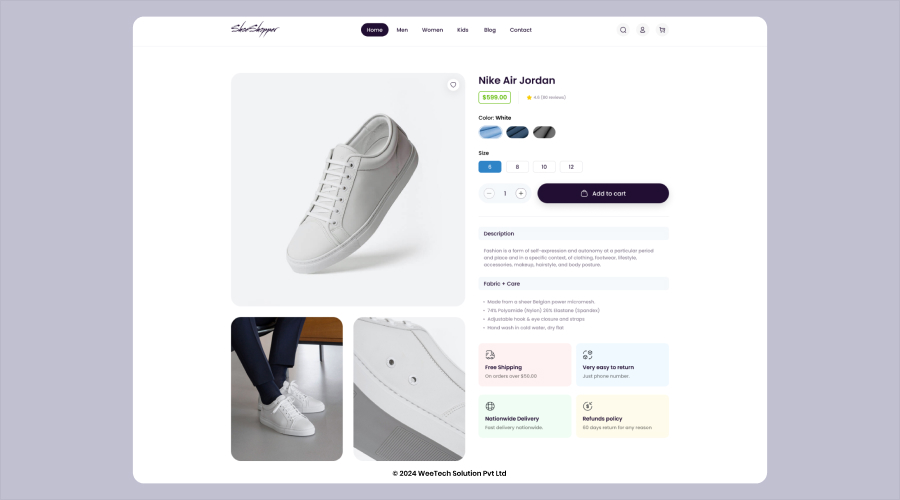
Product pages are essentially the heart of any e-commerce website, and they play an important role in web development services as they contain all elaborative and detailed information regarding each sold item offered to customers so that informed buying decisions can be made. This basic webpage usually consists of a high-quality image, describable details, precise technical specifications, and transparent pricing that focuses on an optimal shopping experience.
Key Features:
- These do not only present the different angles of the product but also depict how it would be used thus better to customers.
- The more details a customer has about features, materials, measurements, and even benefits, the better chance he or she has to reduce uncertainty by knowing exactly what he or she is purchasing.
- Clearly stating the availability of a product manages customer expectations and enables on-time purchasing decisions without frustration.
- Visual provision of swatches and easy options for size and color allow customers to easily choose the correct combination to order, which makes the shopping process smoother and smarter.
- This mechanism of customer review and rating gives way to trust and credibility, as potential buyers see the experiences of others about such products, thereby influencing the decision-making process positively.
Why It is Important in e-Commerce
i. Influences Purchasing Decisions
It becomes a critical point where the prospective customers assess whether the product serves their needs and desires. The design and content of the product page are pivotal in making the sales happen.
ii. Enhances SEO and Visibility
The well-structured product pages, especially those containing relevant keywords along with structures and data, will improve the ranking of this website in the search engines so that its probable customers will find it easier to locate the products.
iii. Reduces Return Rates
By giving clear and precise information about the product, e-commerce websites will help avoid misunderstandings and build proper expectations so that the customers know what they should look for. This can help reduce return rates.
iv. Builds Customer Trust
Apart from this, clear pictures and detailed descriptions make the website appear more professional and drive reliability and trustworthiness into the minds of consumers.
v. Increases Conversion Rates
Any customer who feels well-informed and confident with his buy will complete the transaction, thereby expanding sales and improving business outcomes.
2. Contact us

A contact page is primarily focused on enabling customer contact and support, and it should, therefore, be designed to afford easy access to the business’s contact details while offering ways that encourage inquiries, in addition to fostering a connection between the brand and its customers.
Key Features:
- With this feature, clients can comfortably and directly ask questions and give their feedback on the website, and their concerns are put forth right away, so overall customer satisfaction increases.
- Having several ways of reaching makes the customers have their preferred manner of contacting, whether immediate on call or convenient via e-mail, thus satisfying diverse tastes.
- A physical address on the website, using a map can easily give access to and locate the customers, which may therefore help those people who intend to visit in person or check the genuineness of the company, thereby raising trust.
- Since it connects the customers to the brand in more than one platform, it fosters a wider engagement and creates a community within or around the brand, an outcome that calls for further engagement.
Why It is Important in e-Commerce
i. Direct Communication
A reliable communication channel would be adhered to in the course of addressing inquiries, providing support, and establishing a relationship for long-term loyalty and trust.
ii. Builds Trust
Building customer trust by promoting access and transparency, so that when the contact page is well designed, it will give confidence to customers that their complaints will be sorted out promptly, which is very important in e-commerce.
iii. Quick Resolutions
Providing faster responses to inquiries and issues through multiple contact channels ensures customers are heard and valued. This may lead to great improvements in customers’ perception of a company and its offerings, as well as in the likelihood of return visits.
iv. Encourages Engagement
The effort of soliciting feedback from customers and interacting with them helps build a relationship between the business and its customers and gives great insight to drive improvement in the products and services that eventually catalyze improvements in the business model at large.
v. Gathers Insights
The questions and feedback gathered through this page are vital data points that will help businesses understand where they need to make adjustments, thus allowing them to calibrate their offerings to best serve the customers, ensuring maximum customer satisfaction.
3. Checkout
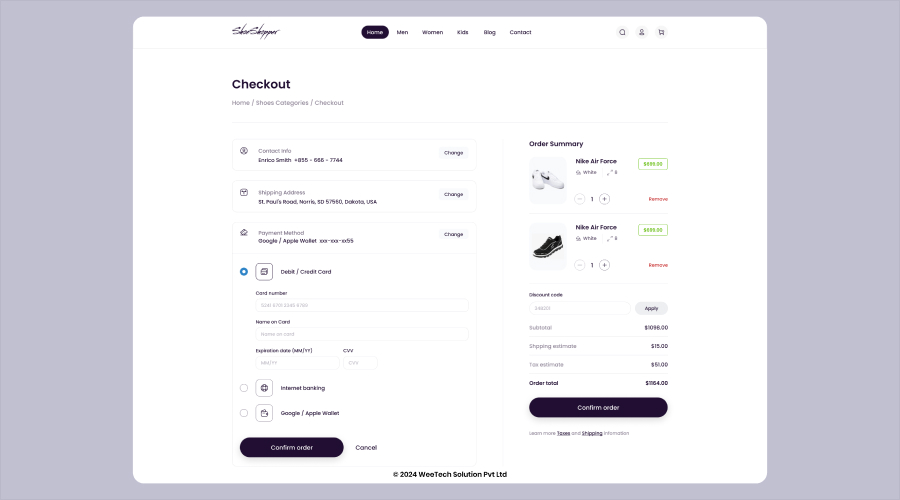
The final leg of e-commerce checkout is their last ride; the smooth, hassle-free experience at checkout can make all the difference between cart abandonment or not, and, in general, improved customer satisfaction.
Key Features:
- Users can make payments without necessarily registering for an account. It takes away some barriers to making a purchase and is easier for customers who do not want to register.
- This helps businesses respond to different needs and preferences by making the one delivery option that would suit a customer’s schedule and budget available so that the customer can see which option is best suited to their schedule and budget while still improving their shopping experience.
- When an order summary is to be presented to the customer at the time of making payment, it provides a last opportunity to read through what they have ordered and be satisfied with all their choices before the full completion of the transaction.
- Security features like the secure payment gateway and encryption are very visible, and this instills confidence among buyers, providing them with reassurance regarding their sensitive information to facilitate purchases.
- The functionality that allows the user to enable simple modifications of items in the cart before proceeding with confirmation of the order shows the provision of a better experience for the user can do last-minute modifications hassle-free, which will also make the result satisfying.
Why It is Important in e-Commerce
i. Minimizes Cart Abandonment
Checkout should be hassle-free and easy to ensure that the customer completes the sale. The completion of a difficult or time-consuming process will very likely frustrate the customer and may lead to lost sales obvious loss thereof directly affecting revenue.
ii. Enhances User Experience
Simple, easy-to-follow check-out procedures translate into a better user experience since the consumer can focus on his purchases rather than navigating away through unnecessary complexities that could confuse them.
iii. Builds Customer Trust
A secure checkout process enhances customer confidence because when there are visual cues along with trust signals then it makes the consumer feel relatively more secure while providing his payment information.
iv. Caters to Diverse Preferences
Multiple shipping options create different choices among consumers, so every buyer or customer can choose a delivery approach that will fit his needs and expectations.
v. Contributes to Higher Sales Conversions
The faster checkout process would not only satisfy customers but also enhance the possibility of return purchases, as happy customers are likely to come back and buy again in the future.
4. Shopping cart
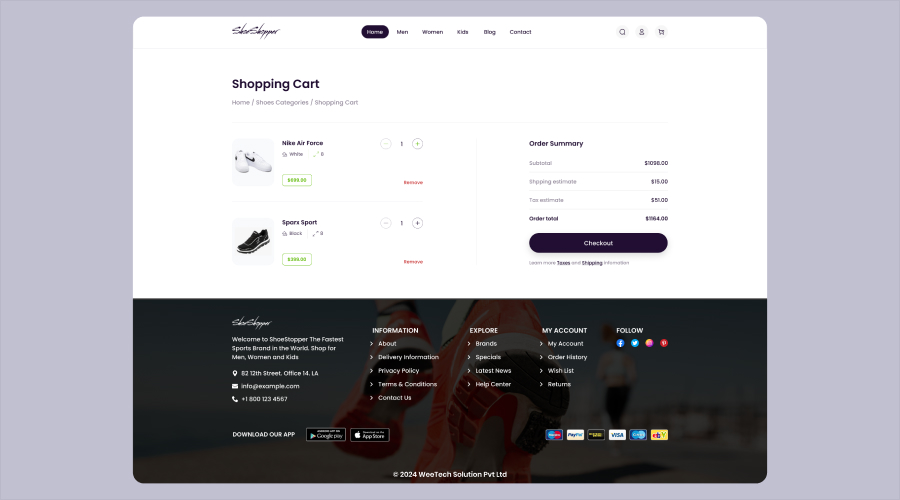
This shopping cart is a very key area where the users will be required to view and edit the items they have chosen for buying to proceed with checkout; therefore, this feature must be accessible and clear about the products they want to buy.
Key Features:
- Giving customers an enumerated outline of the individual product they choose, showing what they intend to buy, which would also be essential to make a more informed choice.
- Offering customers the opportunity to quickly and easily modify quantities of items in their cart would improve the shopping process and support customers toward making the right choices, as they wouldn’t feel hindered by such an occurrence.
- Displaying the total cost beforehand manages customer expectations and makes them better informed before checkout, thereby reducing surprises at the checkout stage.
- A shopping cart feature allows customers to keep items they may want to purchase later on, fostering retention and encouraging return visits as there is a hope of future transactions.
- Related product recommendations can enhance the scope of cross-selling options, and the probability of maximizing order value may also be enhanced with higher browsing options for the customer.
Why It is Important in e-Commerce
i. Encourages Continued Purchases
A cart makes the purchasing process easier and customers are clear about what they want, thus enhancing conversions.
ii. Fosters Customer Retention
This ability to save items for later keeps customers engaged while encouraging them to come back later and complete their purchases – an imperative for long-term relationship building.
iii. Manages Customer Expectations
This feature avoids surprise costs at check-out because it leaves the eye-opened customer satisfied, and most importantly, it abolishes cart abandonment which directly boosts sales.
iv. Increases Average Order Value
Related products to buy will increase additional purchases, which will improve the average order value for the customer, resulting in increased revenue for the business, improving both sides.
v. Reduces Confusion
A well-designed shopping cart reduces uncertainty and makes the overall shopping experience easier for customers, as they are likely to understand their order choices and subsequent actions when browsing the website.
Important Features of Web Development Services in E-Commerce Platform
1. Security

E-commerce inherently relies on security, as it deals with customers’ data and information about transactions, which makes it important for any web development company that helps in ensuring a safe shopping experience through the non-accessibility of this data to unauthorized persons.
Key Features:
- SSL encryption is in practice for securing data transmitted, which means a customer’s data is safe from malware interceptions.
- The usage of more complex algorithms and machine learning can identify suspicious activity and avoid fraudulent transactions and, therefore, bolster the overall security posture of the platform.
- The implementation of forceful authentication measures, such as two-factor authentication, gives an added layer of security to the user allowing only legitimate users to access their sensitive data.
- It will always help the auditor evaluate the security system at regular intervals and thus the platform is free from all types of threats, and the customers cannot suspect them.
Why It is Important in e-Commerce
i. Builds Customer Trust
With a secure shopping environment, it’s easy for customers to give out personal and financial information freely.
ii. Reduces Liability Risks
Proper security measures can reduce the likelihood of a data breach and the possibility of liability claims in court. This in turn saves the business from liability lawsuits.
iii. Enhances Reputation
Commitment to security can act as a differentiator for an organization in a competitive market, helping attract customers concerned about safety.
iv. Encourages Repeat Purchases
When customers have a sense of security, they will be likely to revisit and make subsequent purchases, helping increase customer loyalty and perpetual income.
2. Payment Gateway
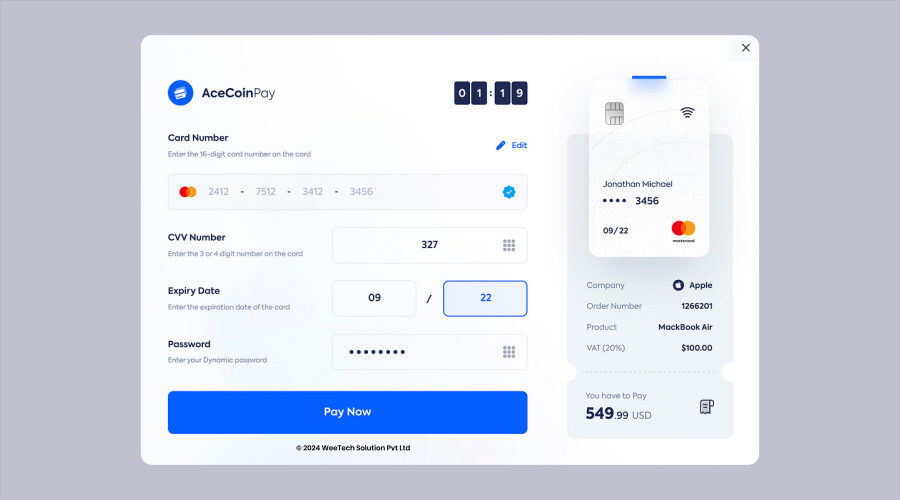
A gateway for secure online transactions. It helps complete transactions smoothly while securely safeguarding the payment information.
Key Features:
- Having several means of payment, such as credit cards, PayPal, and so on, allows flexibility to the customers during the checkout process.
- A seamless payment gateway ensures that the transition from shopping cart to payment is assured to be smooth and seamless in itself, and this helps improve the experience of the user.
- Instant approvals reduce the amount of delay during transactions, so a customer will be able to complete his or her purchase even faster than expected.
- Automatic billing reduces complexities in subscription payments, along with the complexity of the business.
- In place, to detect and prevent fraudulent activities – this will always ensure that the transactions are quite safe and reliable.
Why It is Important in e-Commerce
i. Increases Conversion Rates
All that this does is make a payments process-friendly that is not prone to any cart abandonment, hence more sales and improved customer satisfaction.
ii. Enhances Customer Experience
This can be obtained through offering numerous payment options and smooth processing that makes it a pleasant shopping experience, hence more repeat business.
iii. Builds Credibility
An established payment gateway enhances the trustworthiness of the website, giving customers confidence in making their payments.
iv. Streamlines Operations
Since the process of payment processing and recurring billing is automated, a business gets more free time and more resources to be focussed on expansion.
3. Inventory Management

Inventory management is required to monitor stock quantities, orders, and deliveries such that the business does not face overstocking or understocking for its customers.
Key Features:
- It allows real-time tracking of stock orders so that one can make the right decision at the right time about reordering and selling.
- It will avoid a stockout situation where popular item stock is zero, and out of reach for the customers.
- Supplier data integration allows efficient processes to restock and permits negotiating better terms and pricing from suppliers.
- It provides accurate reporting in detail relating to the performance of the inventory to establish trends and thus optimize stock levels and maintain effective purchasing strategies.
- This considers the inventory management among various channels of sales. This reduces the chances of overselling and also ensures no discrepancies in stock.
Why It is Important in e-Commerce
i. Enhances Customer Satisfaction
As it enhances customer satisfaction by reducing the chances of stockouts and backorders. Thus, customers receive their orders on time.
ii. Optimizes Costs
Effective management of inventory will help reduce the excess stock and the associated storage costs, thus increasing business profitability.
iii. Facilitates Growth
Scalable inventory systems enable companies to track any level of expansion in the volume of sales and the product lines sold.
iv. Improves Decision-Making
Information and analytics allow businesses to make decisions about product lines, pricing, and even marketing strategies more sensitively.
4. CMS integration
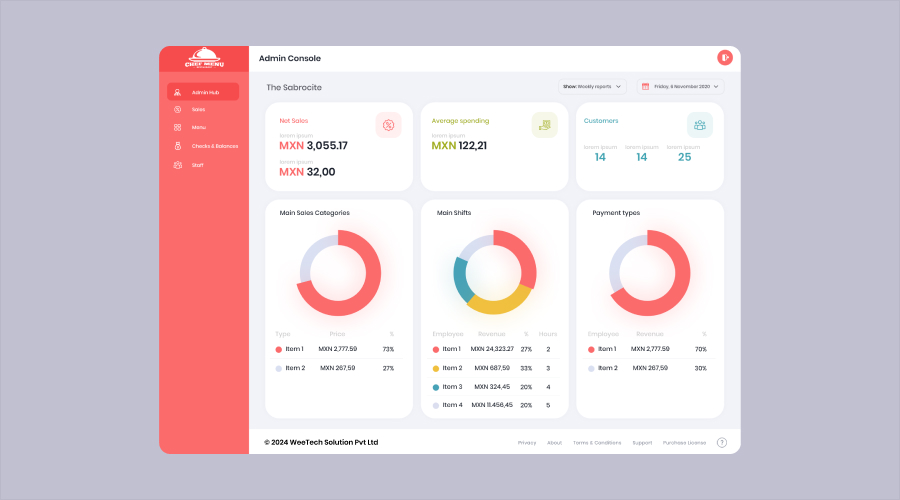
Content Management System Integration Simplifies the updating and improvement processes and ensures that website content is being managed efficiently, thereby avoiding the misuse of outstretched technical information.
Key Features:
- A non-technical individual will be able to easily create, edit, and publish without much hassle, ensuring timely updates.
- Built-in SEO features optimize the content for search engines and enhance its visibility, driving organic traffic to the site.
- Flexible designs help businesses maintain brand consistency while having the leeway to adapt to changing trends and preferences.
- Allows access to customers in various languages, increasing the site’s presence to different audiences
- Since analytics tools can be integrated with CMS, it is easier for businesses to understand what works and what doesn’t about content in order to refine their strategies.
Why It is Important in e-Commerce
i. Facilitates Quick Updates
A good CMS makes it easier for a company to easily remain on top of the trends in any market and still keep its content fresh and relevant at all times.
ii. Enhances Marketing Efforts
Optimized content always increases the rank of search results, which, therefore, increases the number of visitors and, consequently, boosts the chances of conversions.
iii. Improves Brand Consistency
The similar presentation of content on thousands of platforms will necessarily contribute to the development of a more unified brand and attract customer loyalty.
iv. Empowers Non-Technical Users
A user-friendly content management system empowers team members with non-technical skills to participate in content management, thus enhancing general efficiency.
5. Customer Relationship Management
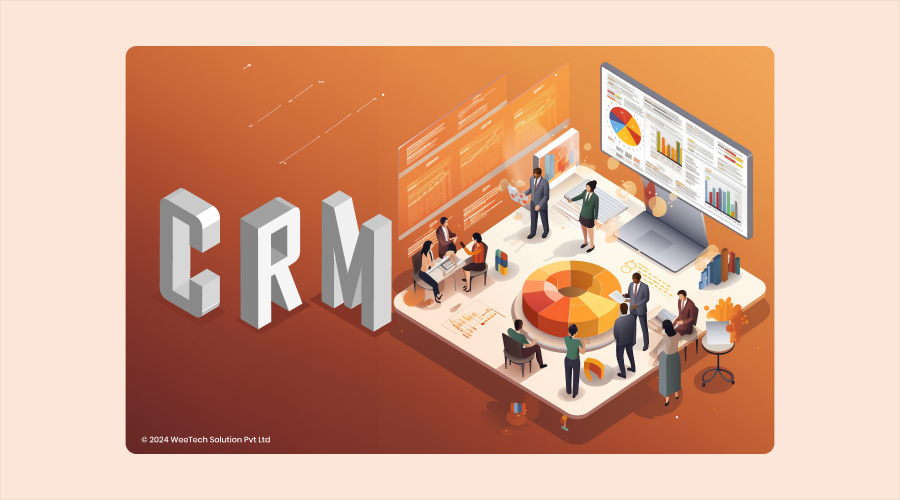
CRM applications manage relationships with existing and potential customers. They enhance customer satisfaction by making a business understand the needs of the customer.
Key Features:
- A single database hosts all the data about a customer, including purchase history, preferences, and contact information. This further helps them make personalized communication and marketing with such customers.
- Automated email and messaging systems allow for the continued nourishment of relationships with customers through the automatic provision of timely feedback and promotions without any manual effort.
- The company tracks sales activities, which help identify trends and opportunities and, therefore enhance effective sales strategies and improved forecasting.
- Segmentation of customers allows marketing efforts targeted at them, which will enhance their engagement as well as conversion rates.
- The company collects and analyses customer feedback and understands which areas need improvement to drive service enhancements and customer satisfaction.
Why It is Important in e-Commerce
i. Enhances Customer Loyalty
Information about the needs and wants of the customers helps build long-term relationships that may translate to repeat purchases or advocacy.
ii. Improves Sales Efficiency
The sales process flows, and conversion rates, along with potential revenue, are monitored closely.
iii. Facilitates Targeted Marketing
Segmentation ensures that proper marketing initiatives are carried out. This directly increases interactions and responses.
iv. Informs Business Decisions
Data guides strategic planning and allocation to businesses, hence fostering widespread growth.
6. Responsiveness

Responsiveness is that feature that ensures that an e-commerce website will be viewed well on anything that possesses internet connectivity, be it small smartphones, tablets, or large desktop monitors, and therefore works great regardless of the size or resolution used.
Key Features:
- Because a responsive e-commerce design is founded on fluid, relative units rather than on fixed layouts, the content is extremely responsive and visually appealing on any device.
- A mobile-friendly design can work better for a customer who makes access to a site from a smartphone or a tablet.
- Optimizing images and scripts results in fast page loads, which subsequently contributes to increased consumer satisfaction and decreased bounce rates.
- Designing interfaces as touch-friendly increases the experience of shopping particularly for the mobile user.
- The consistent function across different browsers maximizes accessibility while providing boosts to user satisfaction.
Why It is Important in e-Commerce
i. Increases Accessibility
Responsiveness expands the target audience because of easy accessibility on all devices.
ii. Improves User Experience
Better readability and usability increase engagement as bounce rates will be lowered, and conversion rates increased.
iii. Boosts SEO Rankings
This website is given preference with any search as it’s mobile responsive; besides, organic traffic increases.
iv. Encourages Brand Loyalty
Seamless experience on all devices brings trust and likely return visits for subsequent purchases.
7. Customer Reviews and Ratings

Customer reviews and ratings provide an important deduction for the quality of products and satisfaction from customers that have a critical impact on purchase decisions and set in the trust for the online marketplace.
Key Features:
- A simple intuitive rating system of allowing customers to rate products based on peer feedback easily and quickly.
- Enabling customers to leave detailed reviews fosters transparency and gives buyers much more informed insights into products.
- The response-ability shows that the business is actively interested in ensuring that the consumers are satisfied and, therefore boosts confidence.
- It ensures a real and applicable review appears on the platform; hence, the credibility of the e-commerce website.
- Filtering reviews by rating, date, or relevance can easily help customers sort credible information while making a purchasing decision.
Why It is Important in e-Commerce
i. Builds Trust and Credibility
Authentic customer reviews help customers develop trust in the quality of a product. By offering authentic customer reviews, new buyers are inspired to make purchases.
ii. Enhances Decision-Making
Having reviews from their peers builds customer confidence and minimizes buyer’s remorse likelihood.
iii. Drives Engagement
Getting customers to leave reviews helps create a sense of community and connectivity, thereby enhancing brand loyalty.
iv. Provides Valuable Insights
Review analysis allows businesses to identify trends and areas for improvement and thereby generate better products and services.
Add-on Features of Web Development Services in E-Commerce
1. Fast Loading Speed
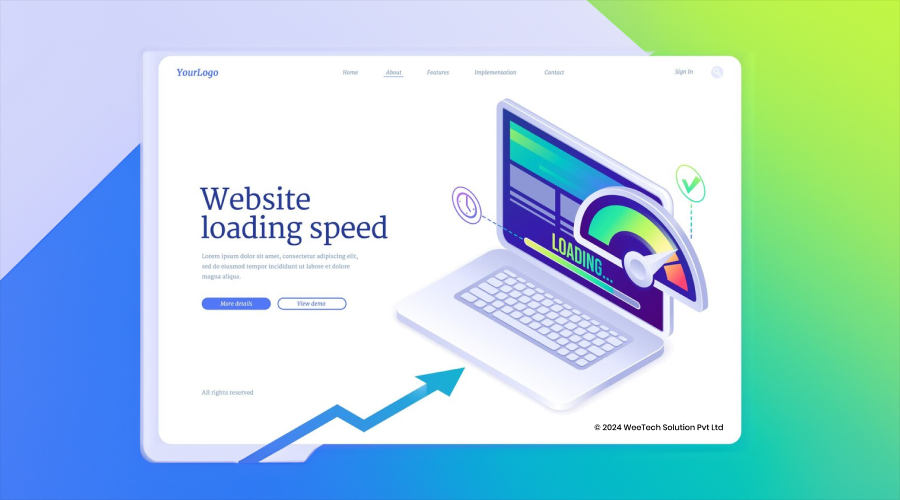
In e-commerce development services, page loading speed is indispensable, as it affects the quality of experience users have on your site and how much conversion is made. A fast-loading website assures that customers do not face any kind of frustration while accessing products or while completing purchases.
Key Features:
- Images can be compressed without losing the qualities that would reduce the loading times and facilitate an overall better performance of the website.
- The lower the number of items on a page, the less time the browser has to spend the time taking to load the site, hence quicker responsiveness.
- With CDNs, this disperses the content spread across different servers, and the user can readily get access to data from the nearest location possible hence speeding up load times.
- When caching is enabled, it stores the frequently accessed data in the user’s browser, which results in quicker loading upon subsequent visits.
- It compresses all the HTML, CSS, and JavaScript files to produce faster sites.
Why It is Important in e-Commerce
i. Enhances User Experience
The customers will leave more in the cart if the site loads faster. In fact, they would look for more products instead of bouncing.
ii. Increases Conversion Rates
A faster loading speed ensures that the conversion rate goes up with it; such frustration mostly makes the customer abandon his shopping cart.
iii. Improves SEO Rankings
It makes the website rank higher in search engines, and therefore, more chances for higher traffic.
iv. Boosts Customer Satisfaction
Speed access to products creates great shopping experiences leading to repeat visits.
2. Easy Navigation

It ensures information or products from an e-commerce website are accessed with no hassle to improve shoppers’ satisfaction while eliminating frustration.
Key Features:
- An organized menu structure will improve the efficiency of browsing various categories and sections by allowing customers to find what they need quickly.
- Search feature: a powerful search feature allows users to find specific products or information quickly, thus enhancing efficiency.
- Filters help customers browse through products by attributes such as size, color, or price, while the filter further allows them to filter by relevance.
- Even if the navigation is really intuitive on the desktop but even more so on mobile devices, the experience remains seamless across platforms.
- A website that maintains in uniform layout throughout, makes it easy for the users to feel familiar and comfortable as they go through a website.
Why It is Important in e-Commerce
i. Improves User Experience
No inconvenience comes with easy navigation, and high conversion rates increase the chances of customers checking out and making purchases.
ii. Reduces Bounce Rates
When it is easy for users to find what they want, they less often leave the website in the early stages and hence earn good retention.
iii. Enhances Conversion Rates
Navigator usability will enable the customers to check out comfortably with ease which helps to increase sales at the end.
iv. Encourages Product Discovery
A website that maintains in uniform layout throughout, makes it easy for the users to feel familiar and comfortable as they go through a website.
3. Multiple Payment Option
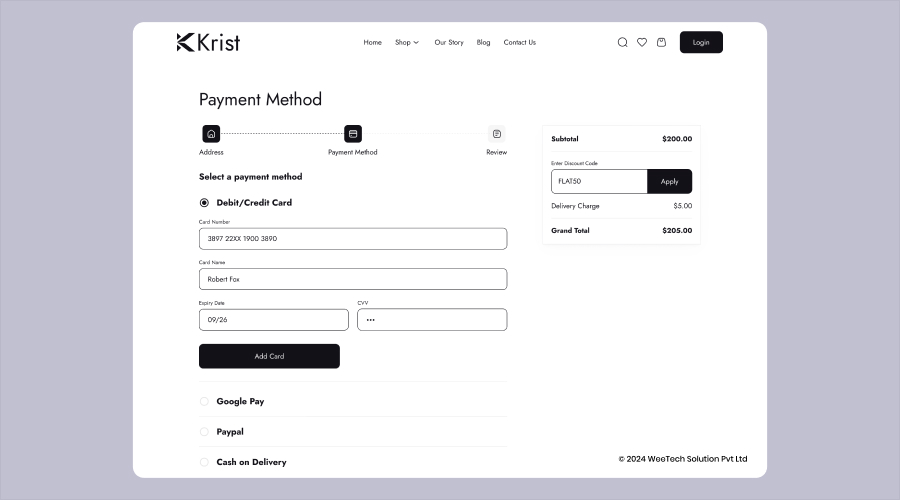
This shall ensure that customers are provided with an opportunity to pay via their favorite mode, thus enhancing convenience and satisfaction at the checking phase.
Key Features:
- This ensures that different customer preferences are catered to and their needs met since multiple payment modes shall include credit cards, digital wallets, and bank transfers.
- For payments in which currency conversions are accepted, this enables international customers to make purchases without confusion over prices.
- One-click payment solutions will ease checkouts, and this encourages faster transactions.
- A secure way of processing payments safeguards customers’ sensitive information, creating trust between the customer and the online seller.
- Providing flexible payment options for customers will allow them to purchase otherwise expensive items, straining their financial muscle; hence, creating a far wider market for them.
Why It is Important in e-Commerce
i. Increases Conversion Rates
With multiple payment options, a customer is less likely to abandon the cart because they will be left with a choice of whatever mode of payment they want.
ii. Enhances Customer Experience
Navigating flexible payment choices pleases customers and inspires repeat business.
iii. Broadens Customer Base
By offering multiple choices, you can reach more customers in different parts of the world.
iv. Improves Trust and Security
Secure options for transactions make customers believe that their information will not be compromised, thus enhancing confidence in the buying process.
4. Breadcrumbs
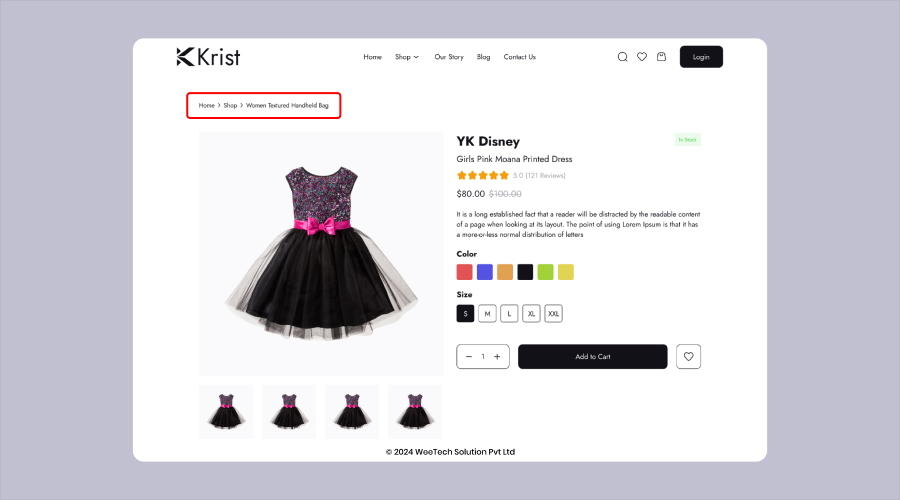
Breadcrumbs are navigational aids that tell users what level they are in the current website’s hierarchy, which facilitates easy backtracking and navigation to categories or pages related to those they are currently navigating.
Key Features:
- The display of a site’s hierarchy of pages reflects the path better navigated by users; this can help users backtrack more easily.
- By granting permissions to the users to click on the links in the breadcrumb, it allows the users to easily backtrack to previous categories faster.
- Breadcrumbs are of an SEO benefit, as they give clearly contextualized meaning over the structure of the site, and thus it leads to better rankings.
- Breadcrumbs being highly visible and accessible on desktop and mobile devices enhance user experience in general.
- Adjusting the breadcrumb style so that it is similar to the styles followed by the site ensures that it fits into the layout of the web page and makes it appear more appealing.
Why It is Important in e-Commerce
i. Enhances User Experience
Breadcrumbs ease the path of users so that they may navigate between categories and pages without getting lost.
ii. Reduces Bounce Rates
Improved navigation results in users going through more products than leaving early from the site.
iii. Supports SEO Strategies
Breadcrumbs are as recognizable to search engines as well, which may lead to increased visibility and drive more organic traffic to the site.
iv. Encourages Product Discovery
Breadcrumbs allow visitors to explore related categories directly from the site itself, which means they can discover even more products that they would like to purchase.
5. Scalability And Future-Proofing

Scalability and future-proofing ensure that your e-commerce website will scale and adapt to increased visitor traffic, product lines, and technological changes without compromising the speed at which your website works.
Key Features:
- Cloud computing allows customers to scale up or scale down easily to accommodate fluctuating traffic and resource demand.
- The ease of adding new features and updates with the modular approach in site development, less redevelopment.
- It creates a balance within the incoming traffic coming in on the servers, which helps in distributing the traffic appropriately during high-traffic times. It therefore maintains a consistent performance level during such times.
- Software and systems update which prevent security vulnerabilities with improvement in functionality. The site will be competitive.
- Readiness for the changing landscape of payment technologies braces the business for future trends and customer expectations.
Why It is Important in e-Commerce
i. Facilitates Growth
Scalable infrastructure supports business growth by increasing sales and customer bases without affecting performance.
ii. Adapts to Market Changes
Future-proofing strategies enable the website to stay relevant and competitive in a rapidly changing digital arena.
iii. Improves Resource Management
Elastic scaling minimizes the wastage of resources such as overprovisioning or poor use.
iv. Enhances Customer Satisfaction
A reliable and fast-loading site builds a positive user experience and provides customer retention and loyalty.
6. High-Quality Product Images

High-quality product images form the most crucial requirements in e-commerce sites since they offer clear and detailed views of products that act as determinants in purchasing decisions.
Key Features:
- It is possible to offer product details through high-resolution pictures, which give customers choices as they purchase.
- This can give a full view of a product by offering pictures from various angles and viewpoints, creating customer confidence.
- The availability of zoom on images helps users zoom in on details so that they may see what the details of the product are.
- Images of the products in real life help the customers imagine the product in their everyday lives.
- A uniform style of the image of products implies a perfect brand and professionalism.
Why It is Important in e-Commerce
i. Enhances Customer Experience
ii. Increases Conversion Rates
iii. Builds Trust and Credibility
iv. Encourages Exploration
7. E-Commerce Analytics and Reporting
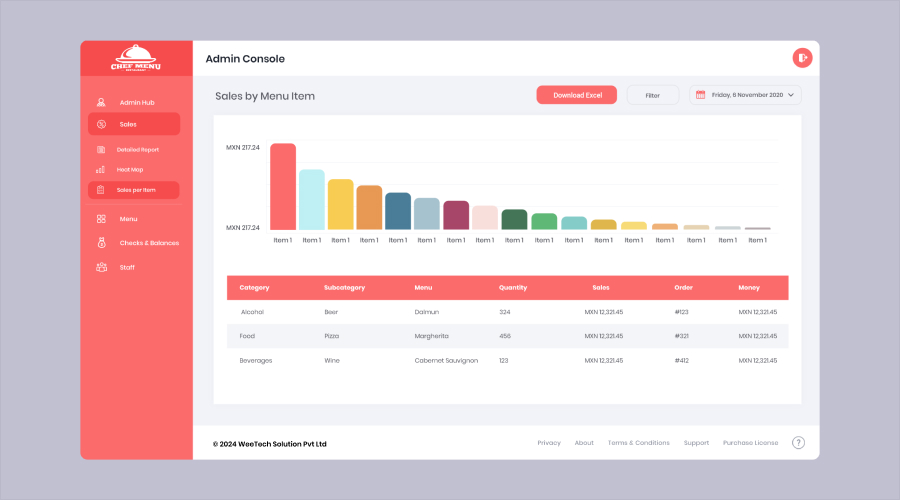
E-commerce analytics and reporting help understand and measure customer behavior, sales performance, and business health, enabling data-driven decision-making for executing strategy.
Key Features:
- The possibility of tracking metrics in real-time helps businesses rapidly respond to trends and shifts that are being exhibited in customer behavior.
- Detailed sales reports help understand what the best-selling products are, seasonal trends, and overall revenue-to-date information that supports decisions about inventory and marketing.
- It helps understand interactions on the site and thus helps mark areas of pain and opportunities for improvements in user experience.
- Conversion rates tell you the actual effectiveness of your marketing and website optimizations and enable firms to adjust future strategies.
- Customized reporting dashboards allow business enterprises to focus on reports that only their business model deems relevant to business objectives.
Why It is Important in e-Commerce
i. Informs Strategic Decisions
Rich visuals enhance the shopping experience of customers and thus make it easier for them to get an overview of products.
ii. Enhances Marketing Efforts
Persuasive product images influence buying, hence increasing sales and reducing cart abandonment.
iii. Improves Customer Experience
Professional images tend to improve the perception of your brand, which is helpful to customers in trusting the quality of the products.
iv. Boosts Overall Performance
Captivating images attract customers by promoting the discovery of other products and categories.
8. Customized Call-to-Action
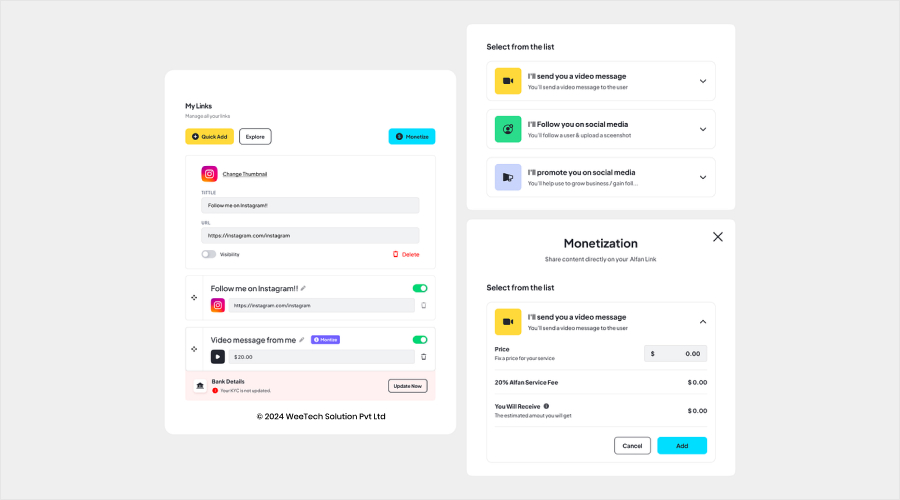
Personalized call-to-action buttons guide a user to any desired action on an e-commerce website, enhancing involvement and conversion based on the message communicated to them.
Key Features:
- Custom-created CTAs, guided by the behavior and preferences of a user, are something with which customers can connect and, thus, increase the chances of engagement.
- Position call-to-action buttons strategically so that they are visible throughout the website.
- Continued testing of variations of CTA helps find the most persuasive messaging and design to maximize conversions.
- Ensuring that the CTAs are easily clickable from a desktop and mobile ensures it is even more friendly toward diverse types of users.
- The use of vibrant colors and designs for the CTA will draw attention and compel people to take action.
Why It is Important in e-Commerce
i. Increases Conversion Rates
Data-driven insights provide businesses with the information needed to make intelligent decisions related to which products to sell, how much to charge, and how to market.
ii. Enhances User Experience
Analysis of customer behavior directs the marketing campaigns toward appropriate audiences.
iii. Improves Marketing Effectiveness
Such a trend identification leads to an optimized user-friendly shopping experience, developing customer satisfaction and loyalty.
iv. Encourages Repeat Visits
Ongoing key metric observation and analysis further adapt and grow the e-commerce business.
9. Swatches

The swatches would provide a visual representation of product options such as colors or patterns, allowing the client to explore the variation before he/she decides to buy.
Key Features:
- Watches are hyperlinks that customers click on to preview product variations, which help them determine their decision and enhance engagement.
- Use high-resolution images displaying swatches to guarantee that customers can view products with accuracy.
- Giving size references along with the swatches makes sense to the customer as to what these options will look like in real life.
- The uniform style of presenting swatches will help in maintaining a uniform look and feel of the entire product catalog.
- This facility of allowing easy access to the swatches from the product pages streamlines shopping, thereby encouraging browsing.
Why It is Important in e-Commerce
i. Enhances Customer Experience
Relevant CTAs that are based on the customer’s choice lead to higher engagement and conversion.
ii. Reduces Returns
Organized and compelling CTAs guide customers through the purchase journey, thus eliminating confusion and frustration.
iii. Increases Engagement
The personalized message used in communicating a specific message to a particular audience improves the campaign as it is more targeted and thus gives better results.
iv. Improves Aesthetics
Navigational CTAs could encourage visitors to come back for their subsequent purchases thus building long-term relationships with customers.
10. Special Offers and Discounts

Promotional offers and discounts attract attention through various incentives for purchasing, which makes an overall e-commerce website appealing and increases sales.
Key Features:
- Having sufficient banners about offers running on the site encourages customers to check out the offers running on the site.
- The time-sensitive offers put the pressure of urgency into their heads, making them perform purchases fast, which sells more products in turn.
- Implementing loyalty programs that offer some discounts or points for every repeated purchase keeps the customer for a longer period and thus generates loyalty.
- The discounts or incentives to refer friends and family widen the customer base and keep the existing customers satisfied.
- Special price sets for bundled products tempt the customer to buy multiple items. And with an increase in order amount, there are chances of selling even more.
Why It is Important in e-Commerce
i. Drives Sales
Incentives such as Attractive Offers and Discounts persuade buyers to opt for the deal, thereby increasing the overall revenue generated by the business.
ii. Enhances Customer Engagement
The promotions that are offered create an atmosphere of joy and also motivate the consumers to navigate through the site, thus enhancing the interaction rates.
iii. Builds Customer Loyalty
The practice of rewarding loyal customers with bonuses is the way to go. It not only guarantees that they will keep choosing your brand for their purchases, but it also entails them recommending you to their friends.
iv. Improves Brand Awareness
Promotional activities are the most powerful technique for a business to improve its image and attract new customers. In this way, the company will make further positive contributions to the general growth of the business.
Conclusion
The main features of web development for e-commerce websites are the basis of a successful engaging shopping experience on the web. Security measures that are user-friendly play a vital role in the performance, and fulfillment, of customer needs. A competent web development company can assist businesses in these projects in a smooth way, their online shopping platform would be up to date with the current market and be ready for future development as well. Spending money on the right web development services, will not only give your e-commerce site more features but also gain customer loyalty, thus laying the foundation for a long-time win.






